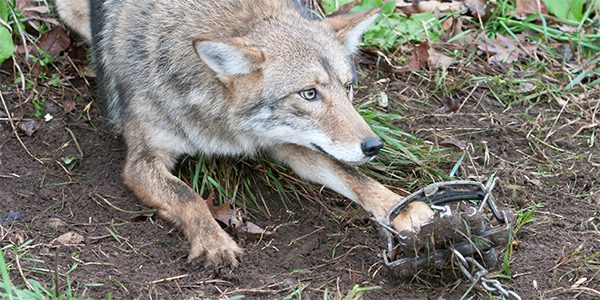Gray wolf information – habitat, diet, pack life, and more
Gray Wolf
Gray wolves were nearly eradicated from the American West by the mid-1900s at the livestock industry’s behest. While wolf populations have since increased, hostile attitudes toward wolves have been creeping back into prominence in recent years, despite the fact that science tells us wolves are critical to the landscapes they inhabit. The bottom line: these charismatic canids still need a champion.
WildEarth Guardians strives to protect endangered wolves in the face of illegal killings and government removals. We use a variety of tools, including policy advocacy, public education, and litigation to weave wolves back into the heart of the American West.
Gray Wolf Habitat
Wolves can live in a variety of habitats, including forests, grasslands, deserts, wetlands, and tundra. Important habitat features include adequate prey, low human activity, and human tolerance for the species. With growing human populations and our increasing pressure on wild places, areas suitable for imperiled wolves are shrinking.
Gray Wolf Diet
Wolves are carnivores that prey primarily on large ungulates such as elk, deer, and occasionally bison, but they will also take smaller prey, including beavers and rabbits. At times, they even dine on insects, nuts, and vegetation. Coastal wolves eat clams, fish, and roe.
When hunting large animals like elk, wolves generally target young, old, weak, or sick prey. Wolves pick vulnerable prey to minimize the substantial risks—injury and even death—they face while hunting large ungulates (hooved animals). Their predation work improves the vigor of prey populations and shapes their ecosystems by keeping prey populations alert and on the move. Without the presence of wolves, elk and deer tend to linger in riparian areas and browse down streamside native vegetation including willow and aspen. When wolves were returned to Yellowstone, scientists were amazed at the effect; elk and deer kept on the move, aspen and willow returned, and stream life, songbirds, and beavers proliferated in once-impoverished habitats.
Wolves in the wild generally do not eat every day, but their average requirement is about four pounds of meat per day. New research shows that there may be a kind of wolf “social security” in action within packs, as wolves’ hunting abilities peak at two to three years of age. Younger wolves provision for older wolves who are past their prime hunting years.
Wolf Diet Myths
Wolves face enormous threats wherever they live because of ignorant or intentionally incorrect claims about their appetites. Left to their own devices, wolves generally avoid humans and livestock. Much of the historic killing of wolves was carried out on behalf of livestock ranchers by federal agents. New research indicates indiscriminately killing wolves increases the likelihood of conflicts with livestock because it disrupts stable family structures and makes it more likely that wolves are desperate for food and target domestic animals.
Today, reintroduced wolves generally hunt native prey, but the anti-wolf belief systems of the livestock industry have yet to fade entirely away.
How Gray Wolves Hunt
Wolves, “coursing carnivores,” run long distances after their prey. This contrasts with “ambush carnivores,” such as cougars, which stalk and ambush their prey, and only run short distances using bursts of speed.
A pack’s hunting territory can often be as large as 50 square miles. Wolves can travel up to 30 miles in a day, and at speeds as fast as 40 miles per hour.
Life in a Pack
Wolves are highly social animals, with the most important family unit being the “pack.” A wolf pack is a family group that usually consists of a single alpha pair, which breed, their offspring of different ages, and sometimes a member adopted from another pack. An alpha female will bear, at most, one litter per year of approximately four to six pups. Non-alpha wolves generally assist in rearing pups and do not themselves breed. Unrelated wolves may join a pack. By age three, male wolves usually disperse out of the pack that they were born into to find mates of their own.
Wolves can reach ages of up to 13 years in the wild, but the average lifespan tends to be six to eight years. Wolves generally mate for life, but if one mate dies, the survivor may look for a new mate.
Wolves howl for a number of reasons, which include locating separated members of a pack and warning other packs to stay away.
Wolf Intelligence
Very intelligent, wolves are capable of a complex range of emotions, including joy, pleasure, happiness, empathy, compassion, sympathy, grief, sadness, and jealousy. Wolves are dependent on each other, whether their duties are on the hunt or back at the nursery den. In 1998, a pack of Mexican wolves feverishly dug out around a log that the mother wolf was stuck in, successfully freeing her. A famous female wolf in Yellowstone paired with much younger brothers who co-parented her litter of pups. Another alpha female lost her alpha status after a neck injury but was clearly cared for by the pack and survived what would otherwise have been a fatal injury.
Wolves mean a lot to each other, so the killing of an individual wolf has tremendous consequences that humans are just starting to grasp. Members of a pack can go to heart-breaking lengths to be together. Wolves can suffer physical, psychological, and emotional trauma. Wolf pack members associate with each other, and those packs maintain networks with other packs. Wolves experience disruption when pack members are killed, which can affect not only individual packs but the entire network of wolves in a region. Social disruption can cause packs to disband and elimination of the breeding pair can lead to the loss of pups from starvation and can increase conflicts with livestock.
